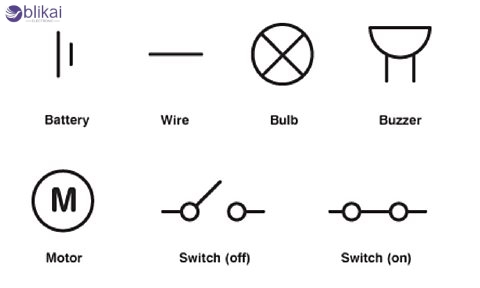What is the Circuit Symbol for a Multimeter? (Guide)
When you look at a circuit diagram, do you ever wonder where the multimeter is? Unlike resistors and capacitors, it does not have a dedicated symbol. Sounds strange, doesn't it? The fact that it is a commonly used tool in electronics makes it even more important. Voltage, current, and resistance can be measured with a multimeter. You can think of it as your electronics sidekick. No matter what you're building or fixing, it's there—checking, confirming, troubleshooting. Throughout this article, we'll explain what a multimeter is, why it's not always displayed, and what to look for instead. Let's clear up any confusion.

What is a Multimeter?
A multimeter measures multiple electrical values, such as voltage, current, and resistance, using a handheld device. Any electrician, engineer, hobbyist, or anyone who works with electronics should have one. Analog and digital are the two types you'll find. There are analog ones with a needle that moves across a scale, which are retro, but still useful. A digital multimeter (DMM) shows numbers on a screen, which are easy to read.
Here's where it gets fun. Multimeters aren't just for looking smart in the toolbox. A lot of work goes into it. Testing batteries, locating broken wires, checking fuses, or troubleshooting weird power problems are all possible. The temperature, frequency, and capacitance can even be measured by some advanced models. What's even better? Using it doesn't require any expertise. Don't worry about what settings to select-let the multimeter do the work.
Circuit Symbol for a Multimeter
But there's a twist—multimeters don't have a dedicated circuit symbol. Weird, right? The fact that it is such an essential tool makes it even more important. Multimeters are not permanent components in circuits, but they are portable. There's more to it than that. Instead of participating in a circuit, you use it to measure what is already happening.
However, when schematics do suggest the use of a multimeter, they will usually show symbols for voltmeters, ammeters, or ohmmeters. These symbols are simple circles with a "V", "A", or "Ω" inside. As a result, technically you don't see a "multimeter" symbol at all, but rather the part of it that is being utilized.
Typically, professional circuit diagrams do not include it. Why? During the construction of the circuit, testing is performed. This is a step that occurs outside of the schematic. A temporary connection is made via test leads so that the multimeter can peek at the numbers. Therefore, you won't see it in the blueprint next to resistors and capacitors.
Why Do Multimeters Don’t Usually Have a Unique Symbol?
The simple answer is that they are not permanently attached to the circuit. Multimeters do not reside on PCBs or remain connected to systems. Rather than being a component, it's a tool. Bringing it in, measuring what needs measuring, and disconnecting it is the next step. A circuit design symbol is only assigned to a physical component in the layout. As a result, the multimeter isn't eligible.
It is also important to note that multimeters are versatile instruments. There are devices that function as voltmeters, ammeters, and ohmmeters, and sometimes more, all in one. What would be the symbol you would use? A “V”? An “Ω”? An “everything meter” icon? Nah. Diagrams show what is being measured instead of what is being measured. In the case of voltage checking, you might see a voltmeter symbol on the schematic. An ammeter is needed if you want to test current. That's all there is to it.
Applications
Measuring Voltage
Useful in many situations. Voltage can be measured by a multimeter, regardless of whether it is AC or DC. It works with wall sockets, batteries, and PCBs. You can use this to test your power supply or to confirm whether or not your charger is working.
Checking Continuity
Just a quick buzz. This is what you hear when the path is complete. The purpose of a multimeter is to test continuity, which is the ability of electricity to pass from one point to another. This is a favorite among electricians. Provides an easy way to discover loose connections, damaged traces, or broken wires.
Measuring Resistance
Are you trying to determine the right value for a resistor? Is there a problem with a wire carrying too much resistance? Measurements can be made using a multimeter. Touch both probes, and boom, the resistance value appears. A helpful tool for determining if heating elements or fuses are in good working order.
Current Measurement
In addition to measuring voltage and current, multimeters are also capable of measuring current. The load must be connected in series with the capacitors. The meter tells you how much current is flowing once it has been set up. It's helpful when you don't want a circuit to be overloaded.
Final Thoughts
Don't be fooled by the multimeter's lack of fancy symbols on its schematic. There's nothing silent about this diagnostic powerhouse. As a result, it steps in wherever things go wrong by checking voltage and tracing broken paths. It is an essential component of any circuit repair or electronics workbench. It's simple. The best. You can think of it as a compass for your electrical world.
Discrete Circuit vs Integrated Circuits: What's the Differences?
Types of Circuit Breakers: Overview and Applications
Circuit Board Repair: Guide for Beginners
How to Choose the Right Circuit Tester
Multimeter Not Reading DC Voltage: How to Fix it?
What are Lighting Ballasts?
2N3904 vs 2N2222:What You Need to know
Difference Between Isolator and Circulator? [Guide]
What are Audio Transformers for?
Multimeter Not Working: But How to Fix it?










